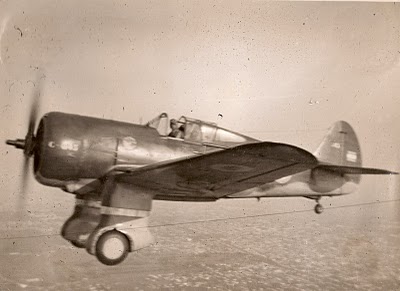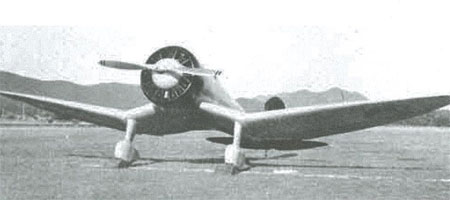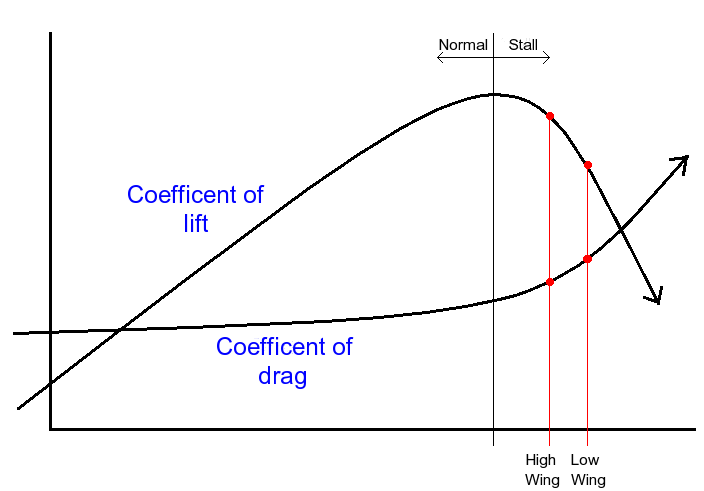|
Mitsubishi 1MF10
The Mitsubishi 1MF10 or Mitsubishi Experimental ''7-Shi'' Carrier Fighter (七試艦上戦闘機) was a prototype Japanese monoplane single-seat carrier-based fighter aircraft of the 1930s. Two were built for the Imperial Japanese Navy, but both were lost in crashes, with no production following. Design and development In April 1932, the Imperial Japanese Navy issued a specification for a replacement for its current carrier-based fighter, the Nakajima A2N, asking for designs from both Mitsubishi and Nakajima. Unlike the biplane which was to be replaced, both competitors submitted monoplanes, with Nakajima offering a version of its Type 91 parasol-wing fighter, already in production for the Japanese Army. Mitsubishi assigned design of its contestant to a team led by Jiro Horikoshi, which created the first low-wing cantilever monoplane to be designed in Japan, the Mitsubishi 1MF10.Mikesh and Abe 1990, p. 170.Green and Swanborough 1994, p. 407. The 1MF10 was of all-metal construc ... [...More Info...] [...Related Items...] OR: [Wikipedia] [Google] [Baidu] |
WikiProject Aircraft
A WikiProject, or Wikiproject, is a Wikimedia movement affinity group for contributors with shared goals. WikiProjects are prevalent within the largest wiki, Wikipedia, and exist to varying degrees within sister projects such as Wiktionary, Wikiquote, Wikidata, and Wikisource. They also exist in different languages, and translation of articles is a form of their collaboration. During the COVID-19 pandemic, CBS News noted the role of Wikipedia's WikiProject Medicine in maintaining the accuracy of articles related to the disease. Another WikiProject that has drawn attention is WikiProject Women Scientists, which was profiled by '' Smithsonian'' for its efforts to improve coverage of women scientists which the profile noted had "helped increase the number of female scientists on Wikipedia from around 1,600 to over 5,000". On Wikipedia Some Wikipedia WikiProjects are substantial enough to engage in cooperative activities with outside organizations relevant to the field at issue. For e ... [...More Info...] [...Related Items...] OR: [Wikipedia] [Google] [Baidu] |
Fuselage
The fuselage (; from the French ''fuselé'' "spindle-shaped") is an aircraft's main body section. It holds crew, passengers, or cargo. In single-engine aircraft, it will usually contain an engine as well, although in some amphibious aircraft the single engine is mounted on a pylon attached to the fuselage, which in turn is used as a floating hull. The fuselage also serves to position the control and stabilization surfaces in specific relationships to lifting surfaces, which is required for aircraft stability and maneuverability. Types of structures Truss structure This type of structure is still in use in many lightweight aircraft using welded steel tube trusses. A box truss fuselage structure can also be built out of wood—often covered with plywood. Simple box structures may be rounded by the addition of supported lightweight stringers, allowing the fabric covering to form a more aerodynamic shape, or one more pleasing to the eye. Geodesic construction Geo ... [...More Info...] [...Related Items...] OR: [Wikipedia] [Google] [Baidu] |
Messerschmitt Bf 109
The Messerschmitt Bf 109 is a German World War II fighter aircraft that was, along with the Focke-Wulf Fw 190, the backbone of the Luftwaffe's fighter force. The Bf 109 first saw operational service in 1937 during the Spanish Civil War and was still in service at the end of World War II in 1945. It was one of the most advanced fighters when it first appeared, with an all-metal monocoque construction, a closed canopy, and retractable landing gear. It was powered by a liquid-cooled, inverted-V12 aero engine. It was called the Me 109 by Allied aircrew and some German aces, even though this was not the official German designation. It was designed by Willy Messerschmitt and Robert Lusser who worked at Bayerische Flugzeugwerke during the early to mid-1930s. It was conceived as an interceptor, although later models were developed to fulfill multiple tasks, serving as bomber escort, fighter-bomber, day-, night-, all-weather fighter, ground-attack aircraft, and reconnaissance ... [...More Info...] [...Related Items...] OR: [Wikipedia] [Google] [Baidu] |
Heinkel He 112
The Heinkel He 112 is a German fighter aircraft designed by Walter and Siegfried Günter. It was one of four aircraft designed to compete for the 1933 fighter contract of the ''Luftwaffe'', in which it came second behind the Messerschmitt Bf 109. Small numbers were used for a short time by the ''Luftwaffe'' and some were built for other countries, around 100 being completed. Design and development In the early 1930s, the German authorities started placing orders for new aircraft, initially Flight training, training and utility aircraft. Heinkel, as one of the most experienced firms in the country, received contracts for a number of two-seat aircraft, including the Heinkel He 45, He 45, Heinkel He 46, He 46 and Heinkel He 50, He 50. The company also worked on single-seat fighter designs, which culminated in the Heinkel He 49, He 49 and later with the improved Heinkel He 51, He 51. When the He 51 was tested in combat in the Spanish Civil War, it was shown that speed was far more ... [...More Info...] [...Related Items...] OR: [Wikipedia] [Google] [Baidu] |
Heinkel He 70
The Heinkel He 70 ''Blitz'' ("lightning") was a German mail plane and fast passenger monoplane aircraft of the 1930s designed by Heinkel Flugzeugwerke, which was later used as a bomber and for aerial reconnaissance. It had a brief commercial career before it was replaced by larger types. The He 70 had set eight world speed records by the beginning of 1933. Design and development The Heinkel He 70 ''Blitz'' (Lightning) was designed in the early 1930s as a mailplane for ''Deutsche Lufthansa'' in response to a request for an aircraft faster than the Lockheed Model 9 Orion (used by Swissair) to service short routes. It had a cantilever low-wing monoplane, with an aerodynamically efficient elliptical wing and retractable undercarriage, and a single nose-mounted engine. In order to meet the demanding speed requirements, care was taken to minimize drag, with flush rivets giving a smooth surface, and fully retractable main landing gear. The tail wheel was not retractable. It was power ... [...More Info...] [...Related Items...] OR: [Wikipedia] [Google] [Baidu] |
Hawker Hurricane
The Hawker Hurricane is a British single-seat fighter aircraft of the 1930s–40s which was designed and predominantly built by Hawker Aircraft Ltd. for service with the Royal Air Force (RAF). It was overshadowed in the public consciousness by the Supermarine Spitfire during the Battle of Britain in 1940, but the Hurricane inflicted 60 percent of the losses sustained by the Luftwaffe in the campaign, and fought in all the major theatres of the Second World War. The Hurricane originated from discussions between RAF officials and aircraft designer Sir Sydney Camm about a proposed monoplane derivative of the Hawker Fury biplane in the early 1930s. Despite an institutional preference for biplanes and lack of interest by the Air Ministry, Hawker refined their monoplane proposal, incorporating several innovations which became critical to wartime fighter aircraft, including retractable landing gear and the more powerful Rolls-Royce Merlin engine. The Air Ministry ordered Hawker's ''Int ... [...More Info...] [...Related Items...] OR: [Wikipedia] [Google] [Baidu] |
Curtiss P-36
The Curtiss P-36 Hawk, also known as the Curtiss Hawk Model 75, is an American-designed and built fighter aircraft of the 1930s and 40s. A contemporary of the Hawker Hurricane and Messerschmitt Bf 109, it was one of the first of a new generation of combat aircraft—a sleek monoplane design with a retractable undercarriage making extensive use of metal in its construction. Perhaps best known as the predecessor of the Curtiss P-40 Warhawk, the P-36 saw little combat with the United States Army Air Forces during World War II. It was the fighter used most extensively and successfully by the French Air Force during the Battle of France. The P-36 was also ordered by the governments of the Netherlands and Norway but did not arrive in time to see action before both were occupied by Nazi Germany. The type was also manufactured under license in China, for the Republic of China Air Force, as well as in British India, for the Royal Air Force (RAF) and Royal Indian Air Force (RIAF). Axis and ... [...More Info...] [...Related Items...] OR: [Wikipedia] [Google] [Baidu] |
Mitsubishi A5M
The Mitsubishi A5M, formal Japanese Navy designation , experimental Navy designation Mitsubishi Navy Experimental 9-''Shi'' Carrier Fighter, company designation Mitsubishi ''Ka''-14, was a Japanese carrier-based fighter aircraft. It was the world's first low-wing monoplane shipboard fighter to enter serviceIt was however preceded by the Dewoitine D.1ter and Wibault Wib.74 high wing monoplanes into service and the predecessor to the famous Mitsubishi A6M "Zero". The Allied reporting name was Claude. Design and development In 1934, the Imperial Japanese Navy prepared a specification for an advanced fighter, requiring a maximum speed of at and able to climb to in 6.5 minutes. This 9-''shi'' (1934) specification produced designs from both Mitsubishi and Nakajima. Mitsubishi assigned the task of designing the new fighter to a team led by Jiro Horikoshi (original creator of the similar but unsuccessful Mitsubishi 1MF10, and later responsible for the famous A6M Zero). The re ... [...More Info...] [...Related Items...] OR: [Wikipedia] [Google] [Baidu] |
Spar (aviation)
In a fixed-wing aircraft, the spar is often the main structural member of the wing, running spanwise at right angles (or thereabouts depending on wing sweep) to the fuselage. The spar carries flight loads and the weight of the wings while on the ground. Other structural and forming members such as ribs may be attached to the spar or spars, with stressed skin construction also sharing the loads where it is used. There may be more than one spar in a wing or none at all. Where a single spar carries most of the force, it is known as the main spar. Spars are also used in other aircraft aerofoil surfaces such as the tailplane and fin and serve a similar function, although the loads transmitted may be different from those of a wing spar. Spar loads The wing spar provides the majority of the weight support and dynamic load integrity of cantilever monoplanes, often coupled with the strength of the wing 'D' box itself. Together, these two structural components collectively provide the ... [...More Info...] [...Related Items...] OR: [Wikipedia] [Google] [Baidu] |
Motoharu Okamura
was a Japanese naval aviator who served as a test pilot in the 1930s, and served as the commander of the 341st Tateyama ''Kōkūtai'' (Air Group) for ''kamikaze'' attacks in June 1944. Career In June 1934, Lt. Okamura was flight testing the second prototype of two Mitsubishi 1MF10 Experimental 7-Shi carrier fighters when it entered an irrecoverable flat spin. Okamura bailed out, but lost four fingers in the accident, jeopardizing his career as a fighter pilot.Mikesh, Robert C., and Abe, Shorzoe, "Japanese Aircraft 1910-1941", Naval Institute Press, Annapolis, Maryland, 1990, . During the Kuangda campaign in China in 1938, Okamura served as a flight leader in the 12th Air Group's fighter squadron, where he was renowned for developing new air tactics for the Navy and was noted as an expert aviator and trainer. He had formed an air demonstration team known as "Genda's Flying Circus" with Yoshita Kobayashi and Minoru Genda, using Nakajima A2N Type 90 fighters, at Yokosuka in 193 ... [...More Info...] [...Related Items...] OR: [Wikipedia] [Google] [Baidu] |
Spin (flight)
In flight dynamics a spin is a special category of stall resulting in autorotation (uncommanded roll) about the aircraft's longitudinal axis and a shallow, rotating, downward path approximately centred on a vertical axis. Spins can be entered intentionally or unintentionally, from any flight attitude if the aircraft has sufficient yaw while at the stall point. In a normal spin, the wing on the inside of the turn stalls while the outside wing remains flying. It is possible for both wings to stall, but the angle of attack of each wing, and consequently its lift and drag, are different. Either situation causes the aircraft to autorotate toward the stalled wing due to its higher drag and loss of lift. Spins are characterized by high angle of attack, an airspeed below the stall on at least one wing and a shallow descent. Recovery and avoiding a crash may require a specific and counter-intuitive set of actions. A spin differs from a spiral dive, in which neither wing is stalled a ... [...More Info...] [...Related Items...] OR: [Wikipedia] [Google] [Baidu] |
Shōwa Period
Shōwa may refer to: * Hirohito (1901–1989), the 124th Emperor of Japan, known posthumously as Emperor Shōwa * Showa Corporation, a Japanese suspension and shock manufacturer, affiliated with the Honda keiretsu Japanese eras * Jōwa (Heian period) (承和), alternatively read as Shōwa, from 834 to 848 * Shōwa (Kamakura period) (正和), from 1312 to 1317 * Shōwa (1926–1989) (昭和), from 1926 to 1989 Japanese places * Shōwa, Akita, a former town in Akita Prefecture * Shōwa, Yamanashi, a town in Yamanashi Prefecture * Shōwa, a former town in Tokyo, now part of Akishima, Tokyo * Shōwa-ku, a ward of Nagoya, Aichi Prefecture * Shōwa, Fukushima, a village in Fukushima Prefecture * Shōwa, Gunma, a village in Gunma Prefecture * Shōwa, Saitama, a dissolved town in Saitama Prefecture * Showa Station (Antarctica), a Japanese research station located in Antarctica Japanese educational institutions * Showa University, in Tokyo * Showa Women's University, in Tokyo * Show ... [...More Info...] [...Related Items...] OR: [Wikipedia] [Google] [Baidu] |







